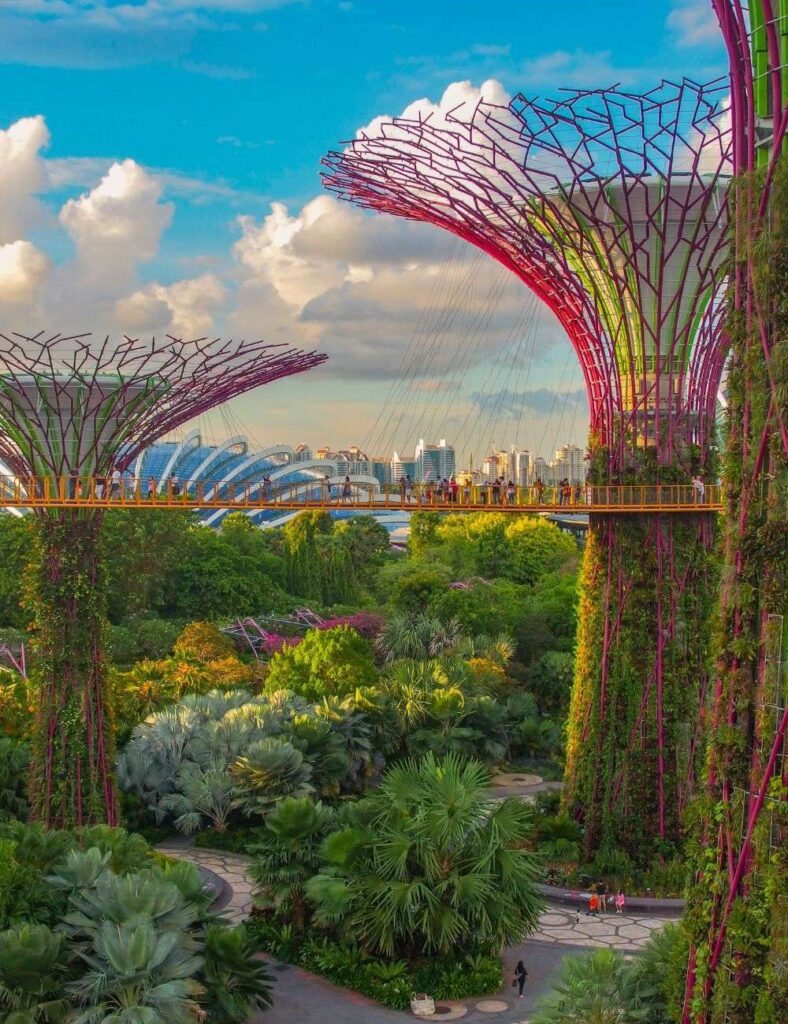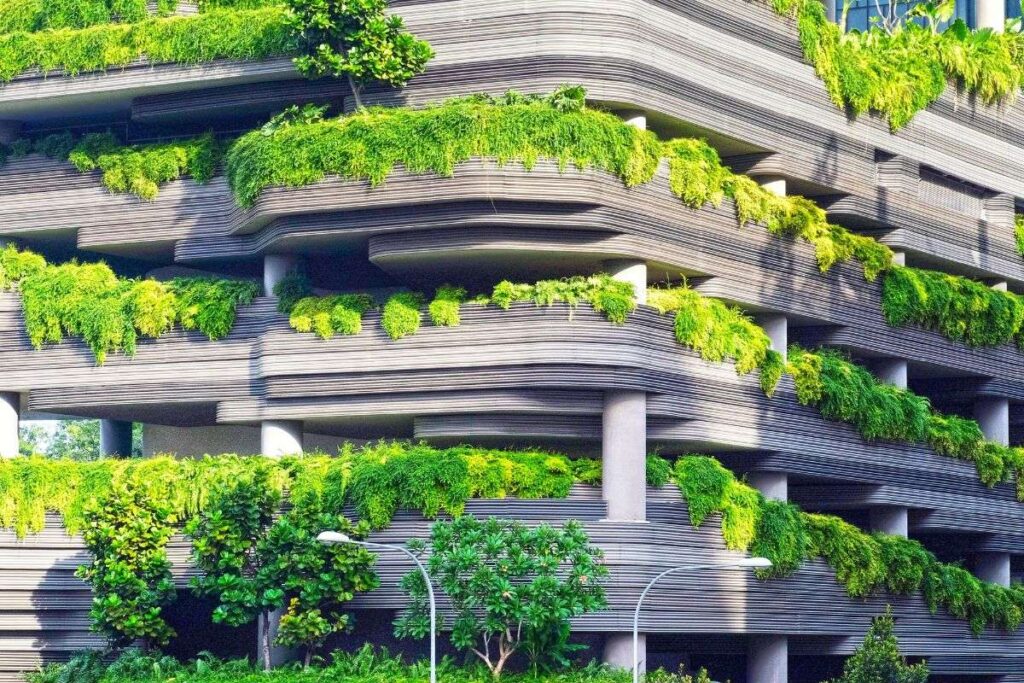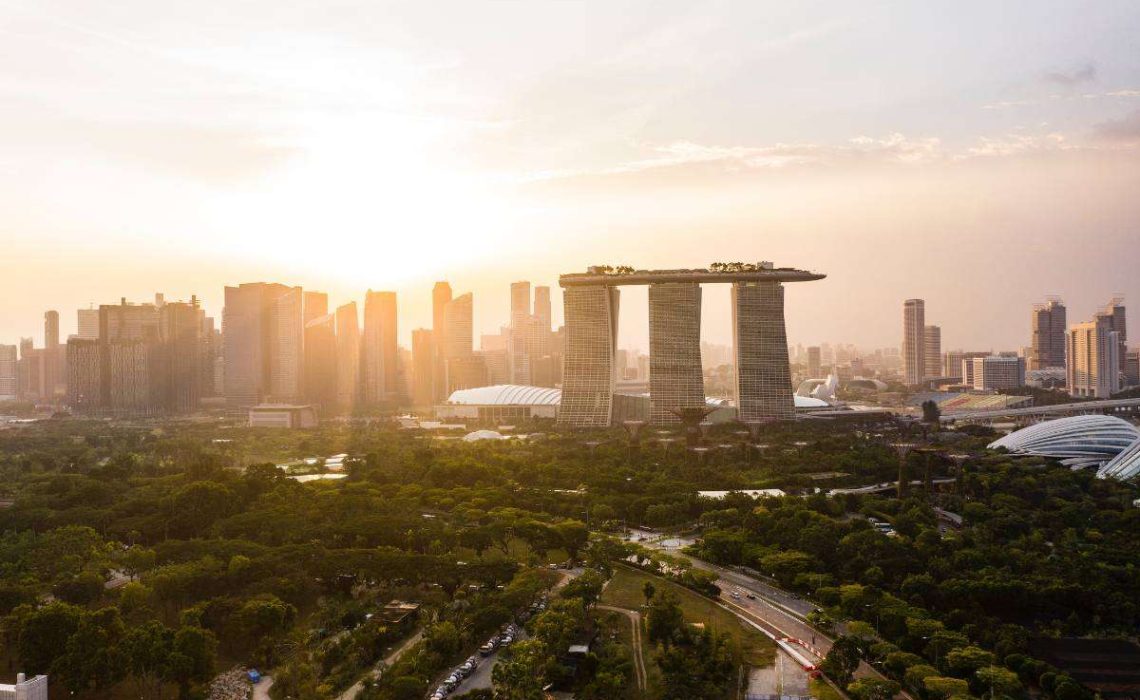The city-state of Singapore has long been considered a leader in green and sustainable urban design, and getting to that place was no accident.
Decades in the making, here are three things that allowed Singapore to become such a successful leader in sustainable and regenerative city planning:
Integrating convention with innovation
At several levels of design and society, Singapore has embraced technology without losing sight of the importance of their natural and existing systems. For example:
- Health and nutrition. Residents stay healthy through traditional methods, like accessing preserved and regreened outdoor leisure space. At the same time, high-tech vertical indoor gardens efficiently grow nutritious food, and 3D-printing provides nutrient-dense edibles.
- Water. Rainwater is harvested in ground reservoirs, while advanced technology desalinates thousands of cubic meters of water each day. Desalination is extremely energy intensive, though, so research is ongoing to improve this process. National Geographic

Building an actual urban jungle
Singapore is known for its impressive feats of biophilic design—it is literally an urban jungle! By merging advanced architecture with lots of beautiful greenery, new buildings and high-rises maintain a connection to nature.
- Biophilic design creates harmony between the natural world and the manufactured world. Ideally this also supports biodiversity and human wellbeing.
In fact, green space replacement is a requirement in the city. When green space is cleared to make way for new developments, natural elements must be replaced somewhere on the building.
This is largely thanks to Cheong Koon Hean, CEO of the Housing and Development Board and the architect behind the sustainable, innovative, and livable boom:
“In Marina Bay, all developments comply with a 100% greenery replacement policy. The… tallest public housing development in the world has seven 50-story buildings connected by gardens on the 26th and 50th floors.” National Geographic

Replanting and preserving trees
Trees and vegetation have a powerful cooling effect and are critical for mitigating the heat produced by cities.
As Singapore booms, trees are regularly cleared to make way for new developments. But the local government doesn’t just let those trees disappear:
- Many cleared trees are relocated to parks, roadsides, therapeutic gardens, universities, and more. EcoWatch
- The One Million Trees project aims to restore inland and mangrove forests by planting one million trees by 2030 (Cities Future). Mangroves encourage biodiversity and antifragility and sequester three to five times more carbon per hectare than other forest types. EcoWatch
Dig Deeper
Of course, there are many factors that contributed to Singapore’s boom. To learn more, watch this episode from National Geographic:

